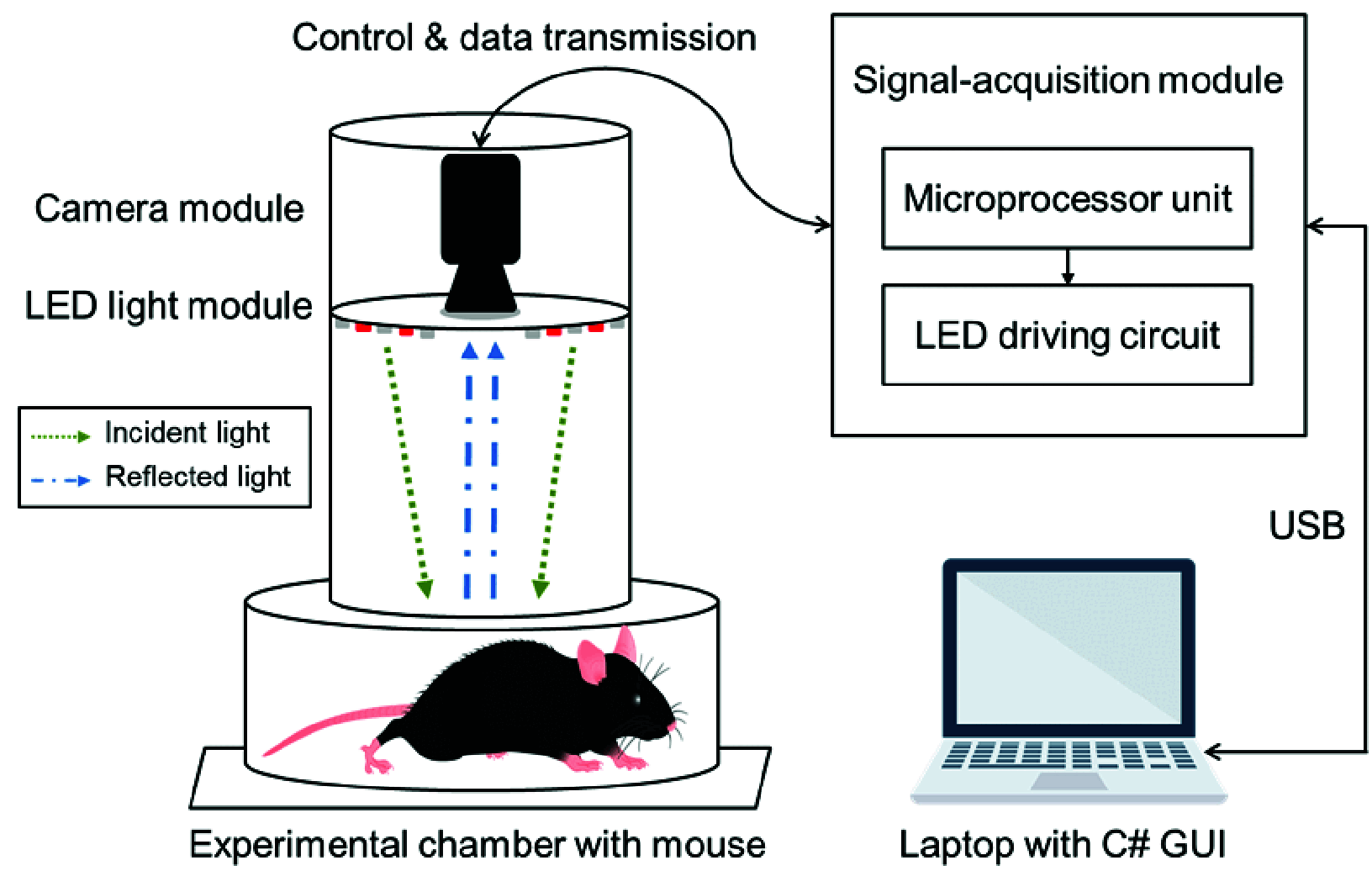Multispectral Imaging-Based System for Detecting Tissue Oxygen Saturation With Wound Segmentation for Monitoring Wound Healing
- PMID: 38899145
- PMCID: PMC11186648
- DOI: 10.1109/JTEHM.2024.3399232
Multispectral Imaging-Based System for Detecting Tissue Oxygen Saturation With Wound Segmentation for Monitoring Wound Healing
Abstract
Objective: Blood circulation is an important indicator of wound healing. In this study, a tissue oxygen saturation detecting (TOSD) system that is based on multispectral imaging (MSI) is proposed to quantify the degree of tissue oxygen saturation (StO2) in cutaneous tissues.
Methods: A wound segmentation algorithm is used to segment automatically wound and skin areas, eliminating the need for manual labeling and applying adaptive tissue optics. Animal experiments were conducted on six mice in which they were observed seven times, once every two days. The TOSD system illuminated cutaneous tissues with two wavelengths of light - red ([Formula: see text] nm) and near-infrared ([Formula: see text] nm), and StO2 levels were calculated using images that were captured using a monochrome camera. The wound segmentation algorithm using ResNet34-based U-Net was integrated with computer vision techniques to improve its performance.
Results: Animal experiments revealed that the wound segmentation algorithm achieved a Dice score of 93.49%. The StO2 levels that were determined using the TOSD system varied significantly among the phases of wound healing. Changes in StO2 levels were detected before laser speckle contrast imaging (LSCI) detected changes in blood flux. Moreover, statistical features that were extracted from the TOSD system and LSCI were utilized in principal component analysis (PCA) to visualize different wound healing phases. The average silhouette coefficients of the TOSD system with segmentation (ResNet34-based U-Net) and LSCI were 0.2890 and 0.0194, respectively.
Conclusion: By detecting the StO2 levels of cutaneous tissues using the TOSD system with segmentation, the phases of wound healing were accurately distinguished. This method can support medical personnel in conducting precise wound assessments. Clinical and Translational Impact Statement-This study supports efforts in monitoring StO2 levels, wound segmentation, and wound healing phase classification to improve the efficiency and accuracy of preclinical research in the field.
Keywords: Multispectral imaging; principal component analysis; tissue oxygen saturation; wound healing; wound segmentation.
© 2024 The Authors.
Figures







Similar articles
-
Validation of multispectral imaging-based tissue oxygen saturation detecting system for wound healing recognition on open wounds.J Biomed Opt. 2024 Aug;29(8):086004. doi: 10.1117/1.JBO.29.8.086004. Epub 2024 Aug 13. J Biomed Opt. 2024. PMID: 39139703 Free PMC article.
-
Hyperspectral imaging as a novel diagnostic tool in microcirculation of wounds.Clin Hemorheol Microcirc. 2017;67(3-4):467-474. doi: 10.3233/CH-179228. Clin Hemorheol Microcirc. 2017. PMID: 28885215
-
Detection of cutaneous oxygen saturation using a novel snapshot hyperspectral camera: a feasibility study.Quant Imaging Med Surg. 2021 Sep;11(9):3966-3977. doi: 10.21037/qims-21-46. Quant Imaging Med Surg. 2021. PMID: 34476182 Free PMC article.
-
Learning of speckle statistics for in vivo and noninvasive characterization of cutaneous wound regions using laser speckle contrast imaging.Microvasc Res. 2016 Sep;107:6-16. doi: 10.1016/j.mvr.2016.04.008. Epub 2016 Apr 27. Microvasc Res. 2016. PMID: 27131831
-
Reproducibility of high-resolution laser speckle contrast imaging to assess cutaneous microcirculation for wound healing monitoring in mice.Microvasc Res. 2022 May;141:104319. doi: 10.1016/j.mvr.2022.104319. Epub 2022 Jan 19. Microvasc Res. 2022. PMID: 35065086
Cited by
-
Validation of multispectral imaging-based tissue oxygen saturation detecting system for wound healing recognition on open wounds.J Biomed Opt. 2024 Aug;29(8):086004. doi: 10.1117/1.JBO.29.8.086004. Epub 2024 Aug 13. J Biomed Opt. 2024. PMID: 39139703 Free PMC article.
References
-
- Thomas Hess C., “Checklist for factors affecting wound healing,” Adv. Skin Wound Care, vol. 24, no. 4, p. 192, Apr. 2011. - PubMed
-
- Strauss M. B., Bryant B. J., and Hart G. B., “Transcutaneous oxygen measurements under hyperbaric oxygen conditions as a predictor for healing of problem wounds,” Foot Ankle Int., vol. 23, no. 10, pp. 933–937, Oct. 2002. - PubMed

